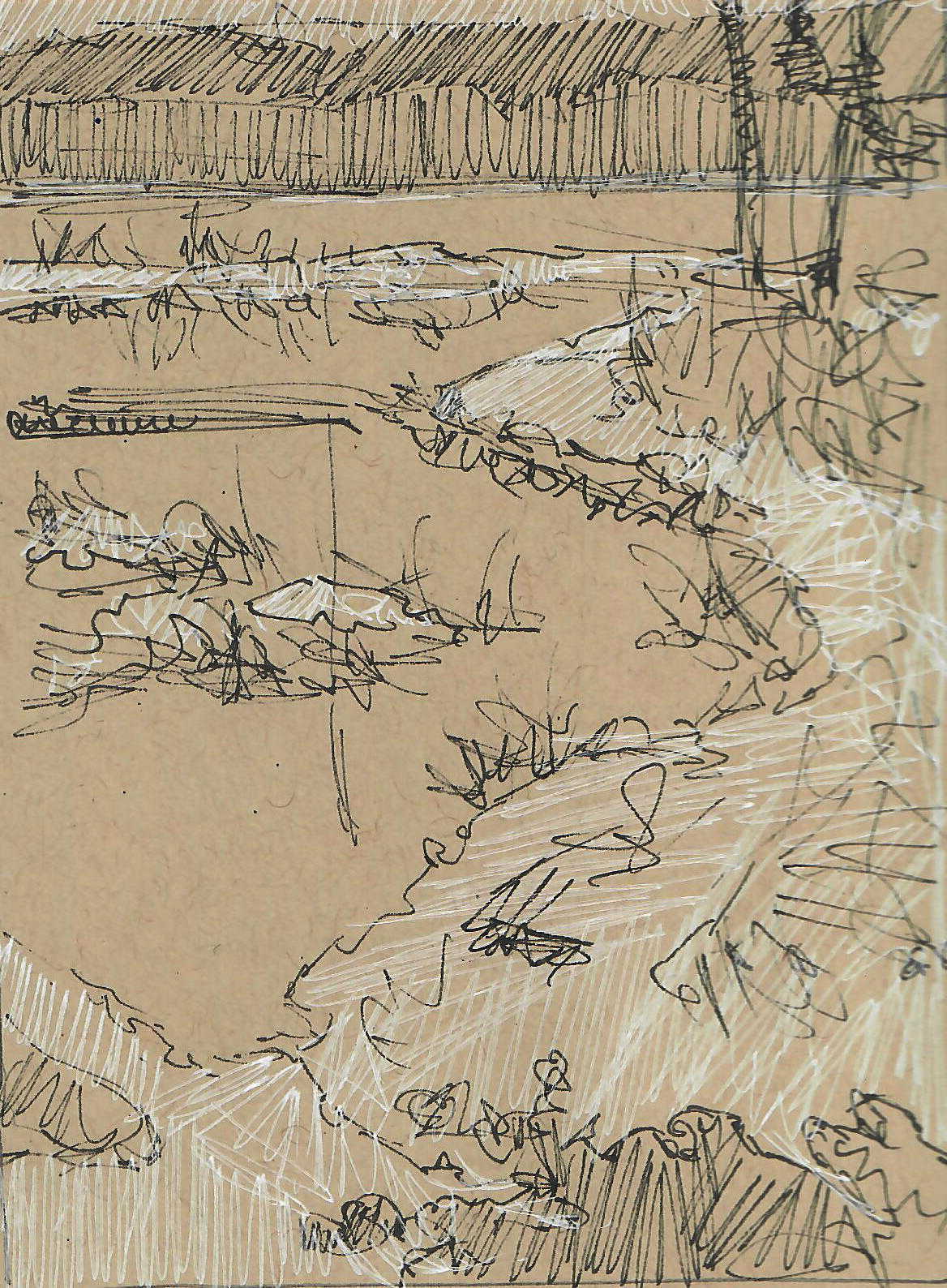PROCESS
I paint in oils, almost always on birch panel, sometimes on canvas, and infrequently on paper. It’s a give-and-take. I love the solid support of the panels. I dislike the spring of the canvas but love its texture. More and more I’m enjoying the immediacy of the direct works on paper.
Regardless of the size of the panels, I buy them in traditional ratios, 1:2, 2:3, 3:4, etc. I apply a coat of PVA to prevent any oils in the wood from leaching back into the painting. I follow with a minimum of three coats of acrylic gesso and depending on the work to follow (and the tolerance of my studio mates) a coat or two of oil ground.
Working from my photos I prepare a simple thumbnail on toned paper sometimes adding white highlights. Successful paintings are the ones that I scale up from the sketch, not the photos. Larger pieces are drawn up on the panels with a grid, smaller ones tend to be direct.
Next is a toned underpainting usually in a warm sepia, sometimes with the darks enhanced with a mix of ultramarine blue. At this stage my past studio-mate Joan Tayler would point out all the ‘tiny creatures’ I had hidden in the underpainting and her husband Hugh would comment that I should leave it unsullied by colour. The design is established, the tonal decisions made, and all that’s left is to play with colour.
I use Gamblin oils almost exclusively because of their remarkable quality. They’re from Portland so they’re practically local. They have a shockingly small environmental footprint and they tend to be pretty ethical without getting all up in your face about it. I’m extremely fortunate in that I get to paint what I want. People seem to share my interest in duck ponds, beaver dams, and giant botanicals. A visit to the Studio + Gallery on a First Saturday is a great time to see and discuss work in progress.






